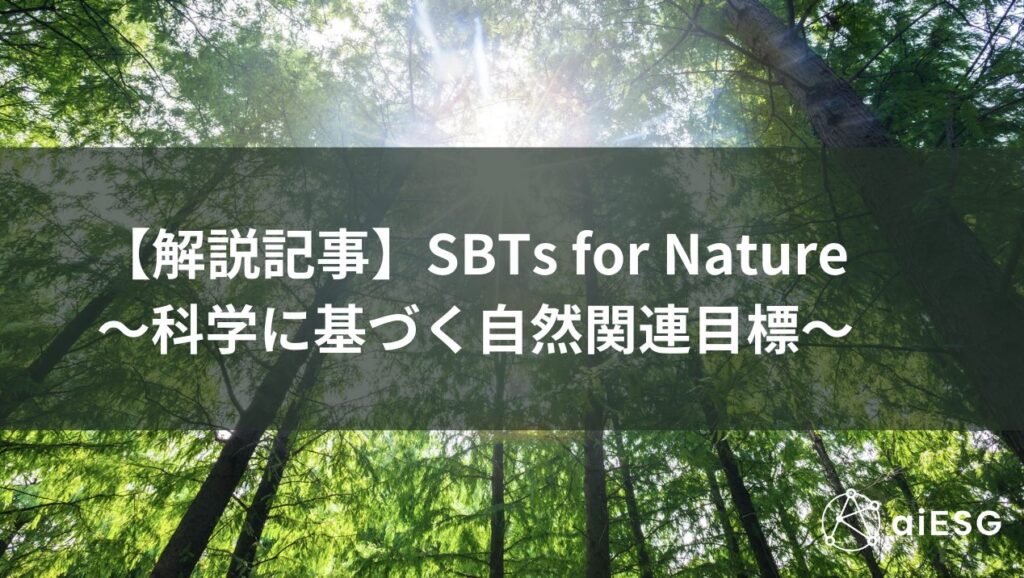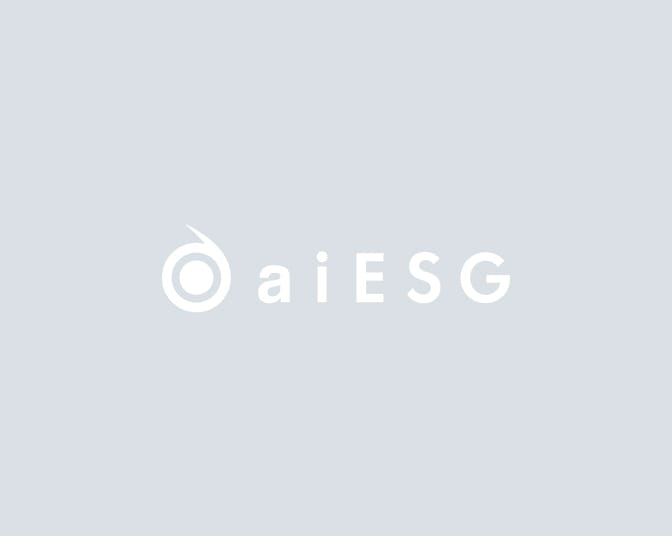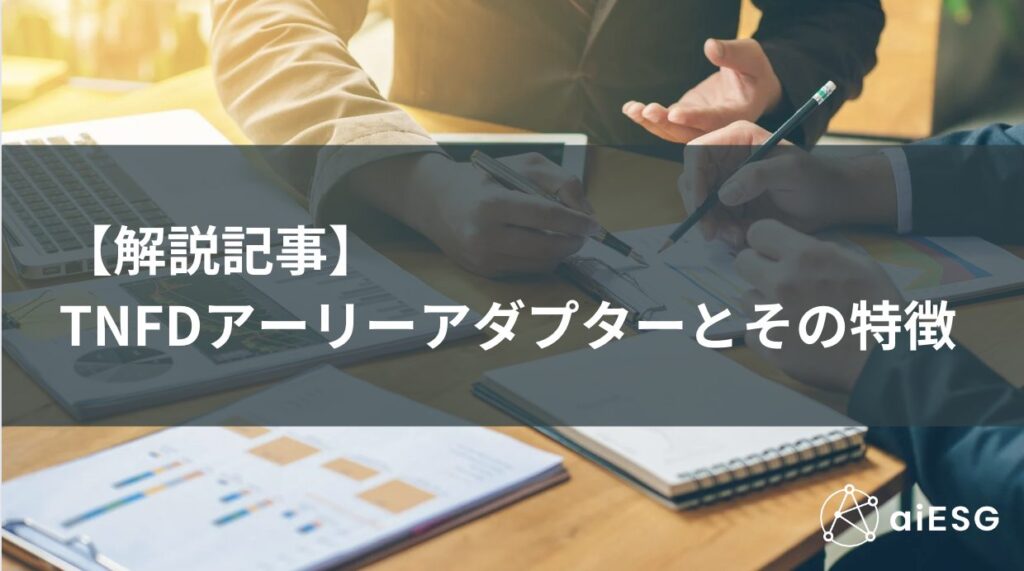INDEX
Among ESG-related disclosure standards and regulations, the SBTs for Nature (science-based setting of nature-related targets) issued by SBTN have recently been gaining attention.
SBTs for Nature is Nature's version of SBTs (Science-based Targets) for greenhouse gas emission reduction targets, and provides guidance for companies and organizations to set science-based targets with the mission to protect the global environment, including air, water, and biodiversity.
This article provides an overview of SBTN and SBTs for Nature and their relationship to TNFD.
Table of Contents
SBTN and SBTi, SBTs for Nature
Composition of SBTs for Nature
Relationship to TNFD
Conclusion
SBTN and SBTi, SBTs for Nature
First, we will look at the background of the establishment of SBTN.
The SBTN is an organization made up of international non-profit and economic organizations, including WWF, CDP, the World Resources Institute (WRI), the UN Global Compact, and others. Prior to the establishment of the WRI, an initiative called SBTi (Science-based Target Initiative) existed, with common organizations as its members.
SBTi
SBTi was established with the adoption of the Paris Agreement in 2015 to provide guidance for companies to set science-based greenhouse gas reduction targets with the aim of deterring climate change and improving the competitiveness of companies in a net-zero economy. The targets set in accordance with this guidance are Science-based Targets (SBT), and as of February 2024, more than 900 companies in Japan are participating.
SBTs for Nature
SBTN, organized on the trend of SBTi, released the first edition of SBTs for Nature (Science-Based Target Setting on Nature) in May 2023 as guidance for nature-related targets that go beyond climate change. The five areas covered are "freshwater," "land use," "biodiversity," "oceans," and "climate change," and the targets are set by assessing and analyzing corporate pressures on each. We will now delve a little deeper into the content of this guidance.
Composition of SBTs for Nature
The SBTN framework consists of five steps (Figure 1), and the guidance currently available is for Steps 1 and 2, and part of Step 3. In this section, we will touch on an overview of each step and look at what is actually required of companies working on the SBTN.

Figure 1: Five Steps of the SBTN Framework
(Source:SBTN Guide for Readers Accompanying Text for Steps 1-3)
Analysis and evaluation (Assess)
The first step consists of 1a. materiality screening and 1b. value chain assessment. In the former, all business activities within the scope of the organization are classified according to the International Standard Industrial Classification (ISIC4) to identify the natural pressures that most require target setting. The materiality screening tool developed by SBTN is recommended for use in this process. In the latter 1b, for the economic activities assessed as material, the magnitude of pressure exerted by the company is matched with the State of Nature (SoN) of each region to identify the geographic areas of particular impact (Figure 2).

Figure 2: Matching pressure and natural state
(Source:Technical-Guidance-2023-Step1)
Interpret & Prioritize
Step 2 consists of four sub-steps (Figure 3), each of which is followed by the following steps
2a. Determination of target boundaries:
Define target boundaries for both upstream and direct operations based on available data
2b. understanding/ranking:
Use environmental and social materiality to rank areas within target boundaries
2c. Prioritization:
Prioritize locations within target boundaries using additional criteria for urgency (cutoff) and co-benefits of actions
2d. assessment of feasibility and strategic benefits:
Incorporate additional social and human rights considerations and assess the feasibility of actions within the scope of the goals

Figure 3: Overview of Step 2
(Source:Technical-Guidance-2023-Step2)
Measure, Set & Disclose
Of the five target areas in Step 3, technical guidance is available for freshwater and land (land is in beta) and a short paper on biodiversity. In addition, a reference to SBTi is provided for climate.
As an example, in the freshwater area, "water quantity (freshwater intake from surface water and groundwater)" and "freshwater quality (total amount of nitrogen and phosphorus taken up by surface water bodies within a specific period of time)" are considered as pressures on nature, and the information necessary to evaluate them and specific target setting methods are provided.
4. action (Act), 5. track (Track)
Specific guidance has not yet been published for Step 4 and beyond, but specific response options for achieving the goals set and methods for tracking and reporting progress are being developed. In addition, for some areas, such as freshwater, a list for action is already included in the Step 3 guidance.
This is the general structure of SBTs for Nature. In each step, the use of SBTN's proprietary tools and databases is recommended, and companies that have already established their own SBTs (greenhouse gas reduction targets) will have an advantage in setting their targets.
Relationship to TNFD
The Taskforce on Nature-related Financial Disclosures (TNFD) is an indicator for assessing a company's nature-related risks. How should SBTs for Nature respond to the TNFD recommendations?
Essentially, the two can be considered complementary to each other. With the common goal of positively impacting companies and organizations on nature, TNFD is a framework for assessing and disclosing information about the current situation, whereas SBTs for Nature is intended to set appropriate targets. tNFD added to the final recommendations released in 2023. As guidance, the TNFD, in collaboration with SBTN, published a text showing the relationship between the two indicators. There, the relationship between the LEAP approach proposed by TNFD and the SBTs for Nature approach is shown (Figure 2).

Figure 4: Relationship between TNFD and SBTN
(Source:Guidance for corporates on science-based targets for nature)
For companies that are trying to disclose information in accordance with the TNFD, the procedures for detailed assessment of current conditions and target setting have to some extent been left to the discretion of the companies. In the future, specific methods for these procedures may be established through the use of SBTs.
Conclusion
This article introduces the background of the SBTs for Nature, which are attracting increasing attention, the responses required from companies, and the relationship with the TNFD. However, considering the number of companies already participating in SBTi and the interest in TNFD, whose final proposal was published last year, it is highly likely that SBTs for Nature will be established as a standard for goal setting in the future. In order to set targets that are backed by scientific evidence and to conduct persuasive ESG management, it will be necessary to consider taking action from an early stage.
At aiESG, we can assist you with the SBTs for Nature, from the basics to the actual goal setting.
Please contact us if your company is having trouble with ESG compliance.
Contact us:
https://aiesg.co.jp/contact/
Related page
Report List : Regulations/Standards
https://aiesg.co.jp/topics/report/tag/基準-規制/
【【Explanation] What is TNFD? A new bridge between finance and the natural environment
https://aiesg.co.jp/topics/report/230913_tnfdreport/
Nature Positive: Realizing a Society that Can Live in Harmony with Nature
~About OECM and natural symbiosis sites~.
https://aiesg.co.jp/topics/report/240214_nature-positive/
G20T20 Policy Brief ~Proposals to Achieve the G20 Framework Goals for Global Biodiversity by 2030
https://aiesg.co.jp/topics/report/g20_report/
[Commentary] Alphabet soup
〜˜Sustainability Standards in Disarray and Convergence
https://aiesg.co.jp/topics/report/2301226_alphabet-soup/
















